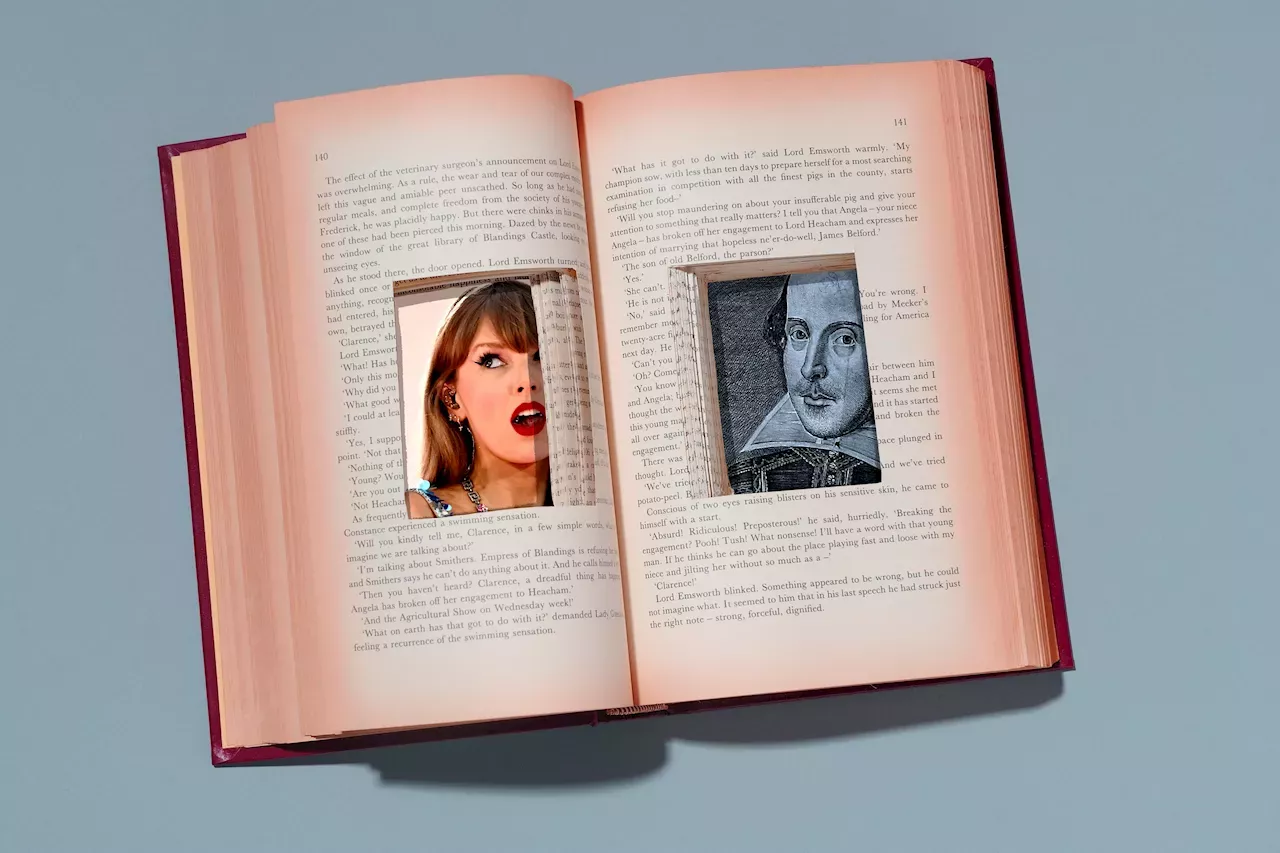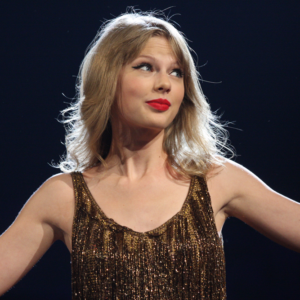
Are pop lyrics poetry? Is a hot dog a sandwich? The questions depend on how you define their terms. Many eaters agree, though, that hot dogs are food, and that some are delicious. In the same way, many listeners agree that Taylor Swift writes memorable words, good to sing in the shower or (if you’re Swift) in front of record-breaking crowds. You might not call them poems—because they require melodies and accompaniments to work their magic—but they do what famous poems long used to do: They give people by the thousands, or the hundreds of thousands, ways to express how we feel. Sometimes my depression works the graveyard shift too; sometimes I, too, want to feel like my partner’s old cardigan, or wish that I had somebody’s picture to burn.
When Swift told us, on The Tortured Poets Department, that she was no Patti Smith, she meant that she wasn’t a groundbreaking rebel, a punk rock genius who flouted prevailing taste. Instead she’s more like Alfred, Lord Tennyson, or Henry Wadsworth Longfellow: not necessarily a large-scale innovator but a master of her craft, and a bona fide phenomenon in her own time, for reasons that experts might want to understand.

Poems for Tortured Souls
Selected by Liz Ison. Little, Brown Books for Young Readers.
Slate receives a commission when you purchase items using the links on this page. Thank you for your support.
Especially if—like me—they’re also Swifties. Some of us write books and articles about her place amid literary canons. Some of us try to write, instead, about songwriting as its own art. And at least one of us—the British educator Liz Ison—has now made her own anthology aimed at Swifties: not “The Anthology” (the name that Swift herself, confusingly, gave Disc 2 of The Tortured Poets Society), but an anthology proper, a collection of poems by various hands that might resonate with what Swift’s songs do.
Poems for Tortured Souls—published in the U.S. by Little, Brown Books for Young Readers—presents itself as being for Swifties of all ages, though the selections and packaging suggest a gift book aimed at youth. These poems come sorted by topic, with Swiftian overtones: “Love,” “Folklore,” “Peace,” “Revenge.” Robert Burns’ “My Love Is Like a Red, Red Rose” comes first; Frances Ellen Watkins Harper’s “Songs for the People” (“Songs to thrill the hearts of men / With more abundant life”) last. In between we get the onetime bestseller Ella Wheeler Wilcox, and Emily Dickinson, and Claude McKay, and (less explicably) Edgar Allan Poe’s “The Raven,” and the prologue from Shakespeare’s Romeo and Juliet. We get L.M. Montgomery, the Anne of Green Gables novelist, with quatrains “thanking” her mortal enemy (compare Swift’s “thanK you aIMee”), and Emily Brontë, of Wuthering Heights fame, proclaiming independence: “I’ll walk where my own nature would be leading: / It vexes me to choose another guide.” And we get Charles Dickens’ catchy ballad of inevitable decay, cast as a jaunty song about English ivy: “The stateliest building man can raise, / Is the Ivy’s food at last.”
In other words, it’s an anthology much like the ones that earlier generations of Americans, and Britons, and Jamaicans (like McKay) devoured, from the Golden Treasury, compiled by Francis Palgrave in 1861, to You Come Too: Favorite Poems for Young Readers, edited by Robert Frost in 1959. A few poems (an excerpt from Samuel Taylor Coleridge’s “The Rime of the Ancient Mariner”) really do speak directly to Swift’s compositions (in this case “The Albatross”; I would have taught that poem when I taught a Swift class, had the song come out before my syllabus dropped). Most of Ison’s selections seem chosen for their clarity, their emotional directness, and their potential appeal to the young, with a welcome eye to the authors’ demographics. Harper first published, and spoke, as a Black abolitionist. Ameen Rihani writes like an English Victorian (“Last night his lips my very feet didst burn”); in fact he helped create Arab American literature, in the U.S. and back in his Lebanese home. These famous poets are not just dead white men.
They are, however, all dead: Ison used only poems in the public domain. Most rhyme, most use regular meters, and most offer general truths, about love, hate, or spring. A book of contemporary “poems for tortured souls” would sound and feel different, even when aimed at the same readers. (Compare, for example, Diana Whitney’s sparkling anthology of contemporary poems for teenage girls, You Don’t Have to Be Everything.) Ison’s choices speak, inevitably, not just to the broad appeal that poems can have but to the popular styles of generations past: They sometimes feel old-fashioned (not a bad thing).
Do they reward rereading? Dickinson’s sure do. Others—Wilcox’s, for example—may give all they have to give in one reading, whatever their glories of sound. And that’s OK: As the critic Karen Kilcup has written, such poems as Wilcox’s “helped make emotional expression permissible in outwardly uncongenial contexts,” generations ago. Readers from farmsteads to tenements compiled commonplace books, clipped newspapers, and memorized favorites: Kilcup, and I, would love to see those habits return. Maybe they have: Look at Tumblr.
Kilcup’s 2019 scholarly book Who Killed American Poetry? argued that academic “hierarchy, distance and solemnity” had bulldozed the democratic roles poems used to have, especially poems for, by, and about women. She blames highbrow critics and reviewers for killing those poems and their anthologies; I’m more inclined to blame radio and TV. But her point remains. Poems for Tortured Souls, from cover to contents, recalls those earlier readers’ demand along with their long-ago tastes. It says it’s an invitation, but it feels more like a friendly museum: Some girls—girls like me—will want to spend time there.
Which brings us back to Taylor Swift. I’d be surprised if many 12-year-olds, if given this book by well-meaning adults, come to idolize Ella Wheeler Wilcox. But they might keep reading, as I keep reading, Dickinson, and Christina Rossetti, and Langston Hughes: These writers, who had mega-hits in their day, stuck around because individual fans found them worth coming back to, memorizing, imitating, passing on. Read in youth, they stuck around; once embraced, they endured. Much that climbs up today’s pop charts won’t stick around—I doubt that people will care about Katy Perry in 100 years. But if they read English, I hope they’ll read Tennyson’s In Memoriam, and listen to “Anti-Hero” and “Long Live.” The poems and songs that inspire a next generation, that stay with us, do so because even after we’ve read them a hundred times, they can say something new. That’s something Swift’s best songs—like some, but not all, of these poems for tortured souls—can do.





